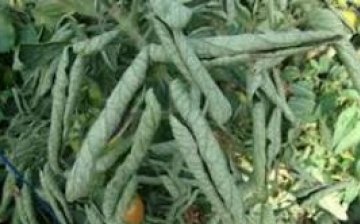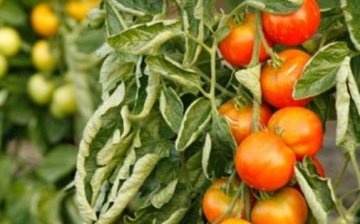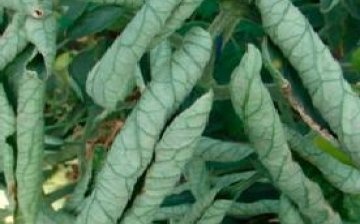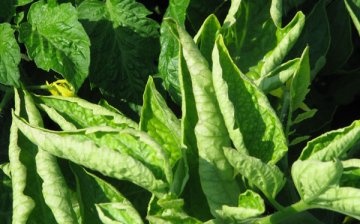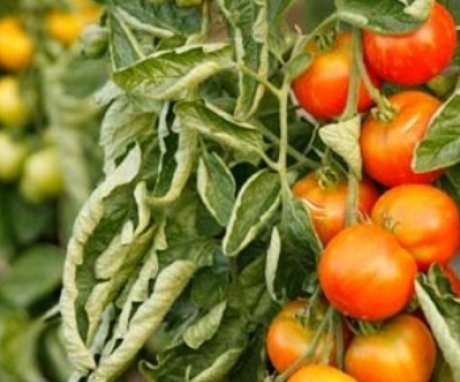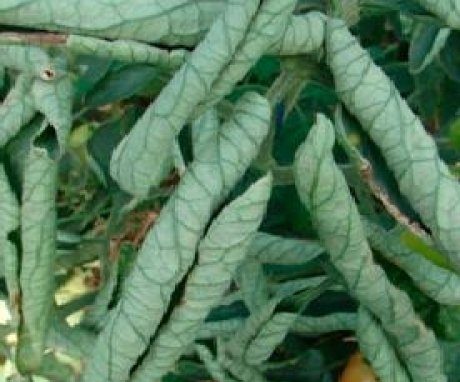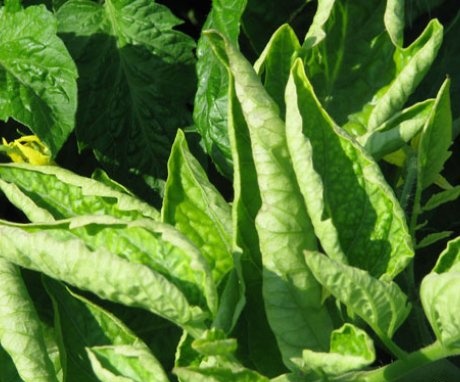Why do tomato leaves curl?
Why do the leaves curl at tomato and what to do in this case? This question often worries gardeners. After all, this condition of tomato leaves can affect the future harvest.
Content:
- Tomato viral diseases
- Influence of unfavorable weather conditions
- Disease Resistant Tomato Varieties
Tomato viral diseases
Viral plant diseases in their external characteristics often resemble physiological disorders. In both cases, there is a change in the color of the leaves, their twisting and coagulation.
Leaf-rolling virus (AFV) is caused by two viruses K and L:
- K virus (mosaic leaf curl) appears as a faint spotting and curling of the upper young leaves with waviness at the edges. It can also affect the root system without any symptoms. The virus is transmitted through seeds and contaminated soil;
- L. virus Most widespread in Europe. We deliver mainly Dutch seeds that have not been treated with antiviral drugs. In the first year of planting such seeds, the virus manifests itself exactly like the virus K. And the next year the lower leaves are affected: they curl into a shuttle, and then into a tube. Further, the upper leaves are affected and as a result, everything loses its elasticity. The virus is not transmitted by contact from a diseased plant to a healthy one.
The leaf roll virus is an insidious disease because it does not respond to treatment. The only way out of this situation is prevention, which consists in processing planting material: tomato seeds are treated with 20% hydrochloric acid for 30 minutes, and then washed with running water.
Influence of unfavorable weather conditions
The leaves of tomatoes also curl due to reasons such as sudden changes in day and night temperatures, especially during high temperatures during the day and high humidity at night. During such unfavorable weather conditions for tomatoes, they are sprayed with Epin, which has growth-stimulating activity and belongs to the class of natural plant hormones. As a stress adaptogen, Epin helps to strengthen the immune system of tomatoes, making them more resistant to diseases and rolling the leaves.
If tomatoes are grown in a greenhouse, then curling the leaves inward means an excess of moisture, and curling upward means a lack of moisture.
Folding of leaves can also appear with an excess amount of nitrogenous substances in the soil. Viral diseases are often characterized by enlightenment along the veins, which gives the plant a special reticular appearance. In mineral nutrition disorders, enlightenment often occurs between the veins. By external signs, it is not always possible to distinguish viral pathology from a lack of nutrients important for the plant in the soil.
If the curling of the leaves is not caused by viruses, then the tomatoes do not die, but only lose their appearance and bear less fruit.
Disease Resistant Tomato Varieties
In order to avoid various diseases and get the desired result, you should plant such tomato varietiesthat are resistant to disease and adverse weather conditions. These are varieties such as:
- Blitz. Grown in the open field and in greenhouses. Compact bush with fruits weighing 80-90 g. Resistant to tobacco mosaic virus, fusarium and late blight;
- Charisma F1. Grown in greenhouses.High-yielding with fruits about 170 g. Resistant to cold weather, tobacco mosaic virus, fusarium and cladosporium;
- Virtuoso F1. Easily tolerates humidity and sudden temperature changes, resistant to late blight. The fruits are large, do not crack, weighing 160 g. Tomatoes of this variety are grown in greenhouses;
- Bohemia F1. A low-growing hybrid that is grown in greenhouses and outdoors. Fruits reach 140 g. Resistant to major diseases;
- Opera F1. Grown in greenhouses. The plant is 1.5 m high and has an average of 100 g. Resistant to many diseases;
- Vologda F1. Grown in greenhouses. Carpal with round smooth fruits weighing about 100 g. Resistant to tobacco mosaic, cladosporium and fusarium;
- Ural F1. High-yielding greenhouse variety. Tomatoes are cold-resistant and resistant to fusarium, cladosporium, tobacco mosaic. The fruits are large, weighing about 350 g;
- Spartak F1. Tall bush with large ribbed fruits weighing about 200 g. Resistant to fusarium, cladosporium and tobacco mosaic.
Diseases and viruses can be found in the acquired seedlings, therefore, experienced gardeners grow seedlings themselves from seeds treated with an antiviral agent. Diseases and viruses are also killed in the planting soil by pouring boiling water over it. Such measures will save you from diseases and the leaf-rolling virus.
Do not worry if the top has twisted leaves in the morning, but in the afternoon they straighten out, if the flowers are bright yellow, bloom two flowers at once in a brush, if the fruits are larger at the base of the brush, and the brushes are located at an obtuse angle to the stem.



